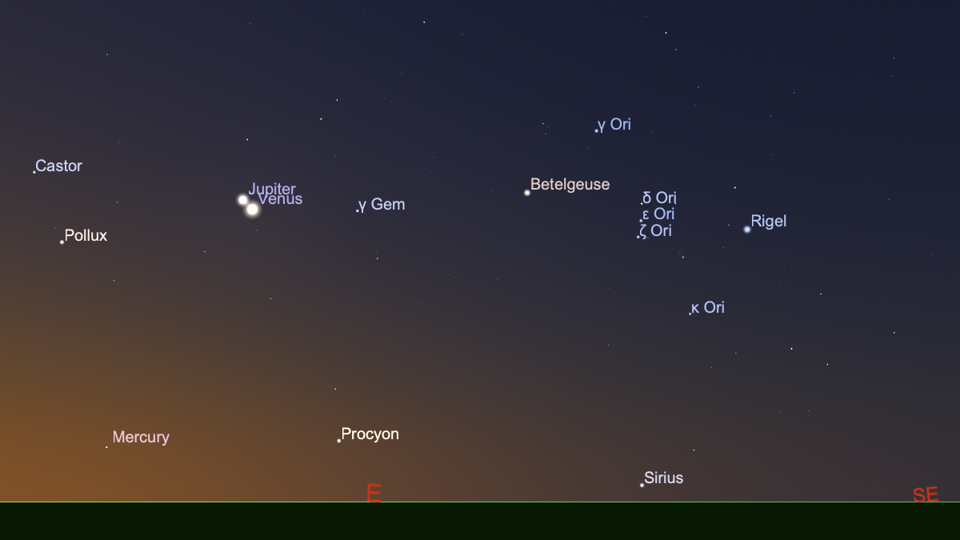Those who rise early — very early — on Monday, Aug. 12, will see one of the skywatching highlights of 2025 as Jupiter and Venus pass each other very closely in the eastern sky.
It’s a night sky sight that’s already begun, with the two planets getting visibly closer with each passing day. Best of all, you don’t need any optical aid to enjoy this celestial sight, just your naked eyes (and an alarm clock).
When Is The Conjunction Of Venus And Jupiter?
It’s happening right now, but for the best view of the two planets at their closest, look to the east-northeast horizon about an hour before sunrise on Aug. 12. As you do, Venus and Jupiter will be virtually alongside each other.
This is not a “proximate” conjunction, according to When The Curves Line Up. That status is reserved for very close conjunctions, when two planets appear to be less than half a degree from each other. On Aug. 12, Venus and Jupiter will appear to have a separation of 0.9 degrees. That’s close — the width of a little finger held at arm’s length.
Why You Need To See The Conjunction Of Venus And Jupiter
The real reason that the conjunction of Venus and Jupiter is unmissable this year is that the two planets are so bright. During the conjunction, Venus will shine at -3.9 magnitude and Jupiter at -1.9 magnitude. Venus will be about six times brighter than Jupiter, but both will dominate the pre-dawn night sky.
If you have a pair of binoculars, point them at Jupiter and you’ll see some bright dots in a line around it — its four Galilean moons, Ganymede, Europa, Callisto and Io.
This Venus-Jupiter conjunction — which happens every year — is worth seeing in 2025 because the next one, on June 6, 2026, will see the planets significantly farther apart.
Is The Conjunction Of Venus And Jupiter Real?
It’s not. All conjunctions are merely a line-of-sight illusion. Venus orbits the sun in 224 days, a little faster than Earth’s 365, while Jupiter takes 12 years to complete one orbit. On Aug. 12, Venus will be 115 million miles (186 million kilometers) from Earth and Jupiter 552 million miles (889 million kilometers), so around 438 million miles (703 million kilometers) apart. Jupiter will be about 4.8 times farther from Earth than Venus during the conjunction.
They appear to be close because all planets in the solar system orbit the sun along the same plane, a line through the sky from east to west that’s the same as the path of the sun through the daytime sky. This is called the ecliptic, and it’s where planets are found — and often appear to catch up and overtake each other from our point of view on a fast-moving planet.
For exact timings, use a sunrise and sunset calculator for where you are, Stellarium Web for a sky chart and Night Sky Tonight: Visible Planets at Your Location for positions and rise/set times for planets.

